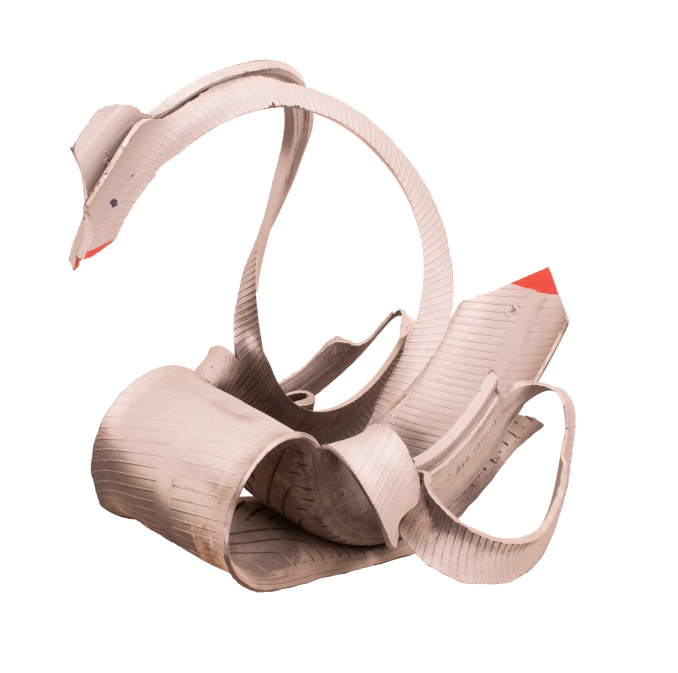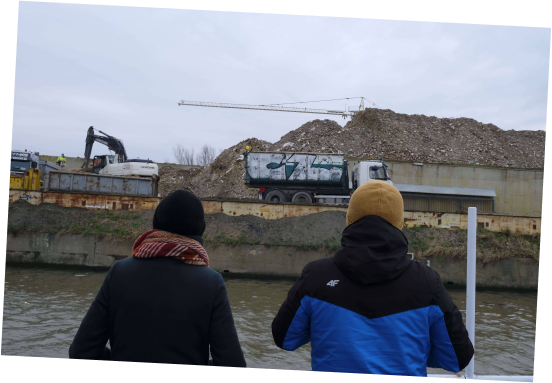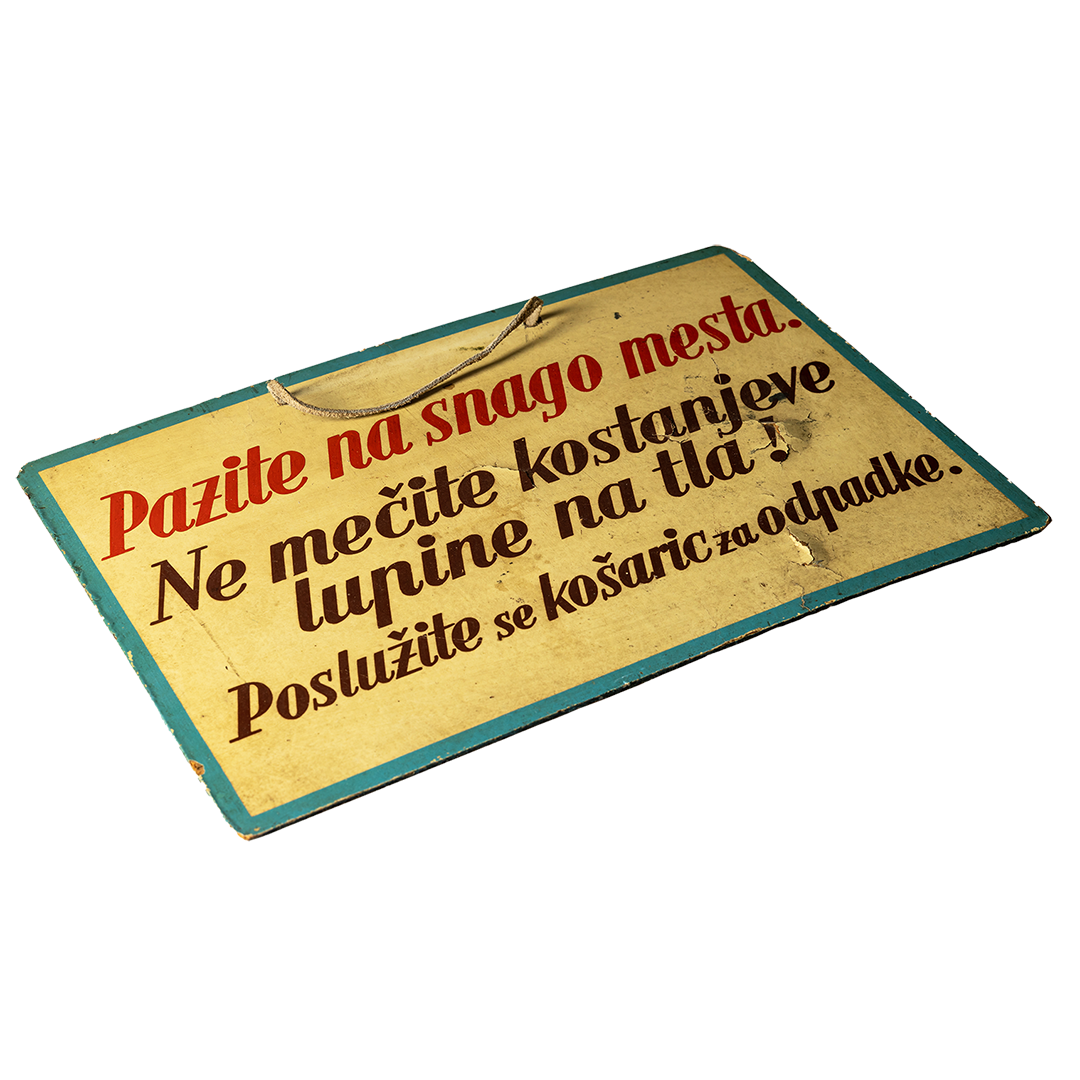Artist/Maker Unknown
Date Production/Creation
First half of the 20th century
Entry in the museum collection
2014
Place of origin
Celje, Slovenia, Europe
Current location
Museum of Recent History Celje, Celje, Slovenia
Material
Fibreboard, twine / handmade, paint
Dimension
280x410x30 mm
Inventory Number 745:CEL;S-23361
Keyword Hygiene People Rubbish
Copyright Celje Museum of Recent History
Status On display
Image Credit Matic Javornik
A relic from the dawn of our throwaway age.
What is this object about, who are the people behind it?
Notice board with the inscription ‘Keep the city clean. Do not throw chestnut shells on the ground! Use the wastebins’. In the 1920s this notice board was placed in front of the Metropol cinema in the city centre to remind people to keep the city clean. Since Austro-Hungarian times Celje had been renowned as a friendly, romantic place to visit. Its natural beauty drew comparisons with the Rhineland. It was called the ‘Heidelberg of the South’ and the ‘Jewel on the Savinja’ (after the pristine river which passes through the city). It was important therefore for the streets of the old city centre to be clean and tidy.
What places is this object related to, how European/transnational is it?
The notice board draws attention to the need to keep the city clean and to use wastebins. It was put up in Celje city centre. The inscription on the notice board is in Slovene.
Why and how did this object arrive in the museum’s collection?
The Museum of Recent History Celje purchased the notice board from a private collector in 2014. It offers a snapshot of life in the city between the wars, highlighting the importance of tidiness and the efforts of the Celje Beautification Society to keep the city’s streets clean. The notice board is part of a permanent exhibition entitled "Living in Celje".
What is the relation of this object to waste?
In an effort help prevent littering of the city’s streets and squares, the notice board warned visitors not to throw chestnuts shells on the ground. Notice boards such as this one were put up in the city by the Celje Beautification Society, which was established as early as 1871, to keep the city attractive. The society also looked after the city’s green spaces, planting trees along roads and laying out parks and flower gardens, as well as ensuring that the windows and balconies of houses were kept tidy, all so as to ensure that Celje was a pleasant place both to live in and to visit.















